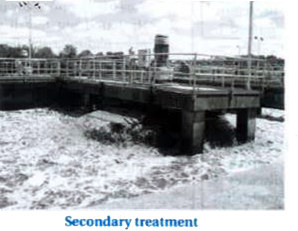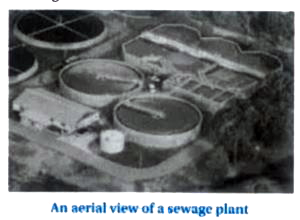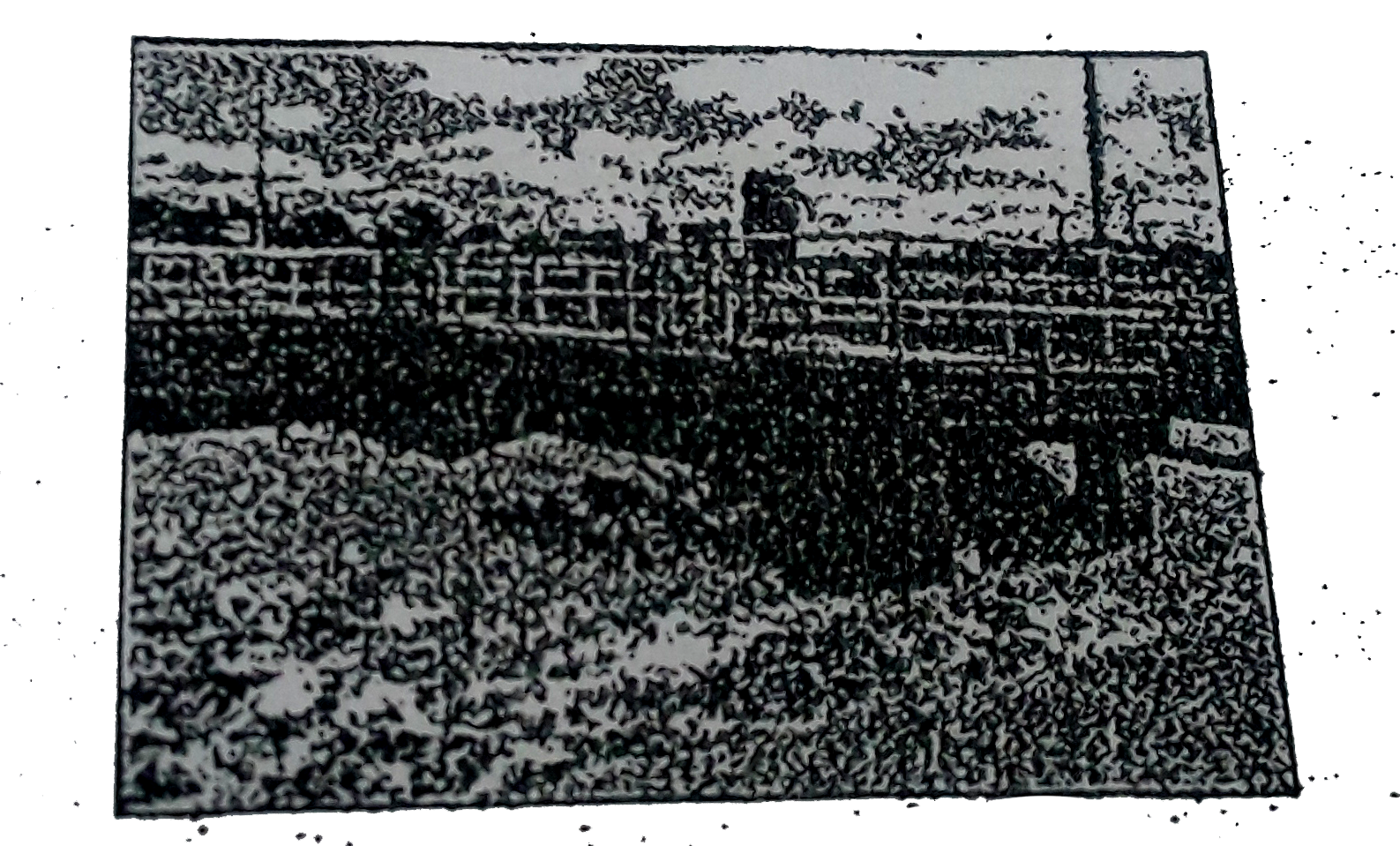Explain the stages included in sewage treatmentSolution in Gujrati

The sewage treatment is carried out in two stages: Primary Treatment : In this first stage involves physical removal of particles large and small from the sewage through filtration and sedimentation. Initially, floating debris is removed by sequential filtration. Then the grit are removed by sedimentation. All solids that settle form the primary sludge and the supernatant forms the effluent. Secondary treatment or Biological treatment: The primary effluent is passed into large aeration tanks where it is constantly agitated mechanically and air is pumped into it. This allows vigorous growth of useful aerobic microbes into flocs (masses of bacteria associated with fungal filaments to form mesh like structures). While growing these microbes consume the major part of the organic matter in the effluent. This significantly reduces the BOD of the effluent. BOD refers to the amount of oxygen that would be consumed if all he organic matter in one liter of water were oxidised by bacteria. The sewage water is treated till the BOD is reduced. The BOD test measures the rate of uptake of oxygen by microorganisms in a sample of water and thus, indirectly BOD is a measure of the organic matter present in the water. The greater the BOD of waste water more is its polluting potential Once the BOD of sewage or waste water is reduced significantly, the effluent is then passed into a settling tank where the bacterial flocs are allowed to sediment. This sediment is called activated sludge. A small part of the activated sludge is pumped back into the aeration tank to serve as inoculum. The remaining major part of the sludge is pumped into large tanks called anaerobic sludge digesters. Here other kinds of bacteria, which grow anaerobically, digest the bacteria and the fungi in the sludge. During this digestion, bacteria produce a mixture of gases such as methane, hydrogen sulphide and carbon dioxide. These gases form biogas. Biogas can be used as source of energy as it is inflammable. The effluent from the secondary treatment plant is generally released into natural water bodies like rivers and streams. Microbes play a major role in treating millions of gallons of waste water everyday across the globe. This methodology has been practiced for more than a century now in almost all parts of the world. So the untreated sewage is often discharged directly into rivers leading to their pollution and increase in water borne diseases. The ministry of environment and Forests has initiated Ganga Action plan and Yamuna Action plan to save these major rivers of our country from pollution. Under these plans, it is proposed to build a large number of sewage treatment plants so that only treated sewage may be discharged into the rivers.

Topper's Solved these Questions
- BOOK - KUMAR PRAKASHANCHAPTER - MICROBES IN HUMAN WELFARE EXERCISE - SECTION - A EXAM ORIENTED QUESTIONS ANWER FROM DARPAN (MICROBES IN IN PRODUCTION OF BIOGAS)2videos
MICROBES IN HUMAN WELFARE
- BOOK - KUMAR PRAKASHANCHAPTER - MICROBES IN HUMAN WELFARE EXERCISE - SECTION - A EXAM ORIENTED QUESTIONS ANWER FROM DARPAN (MICROBES AS BIOCONTROL AGENTS)3videos
MICROBES IN HUMAN WELFARE
- BOOK - KUMAR PRAKASHANCHAPTER - MICROBES IN HUMAN WELFARE EXERCISE - SECTION - A EXAM ORIENTED QUESTIONS ANWER FROM DARPAN (MICROBES IN INDUSTRIAL PRODUCTS)4videos
MICROBES IN HUMAN WELFARE
- BOOK - KUMAR PRAKASHANCHAPTER - HUMAN REPRODUCTIONEXERCISE - SECTION-F MULTIPLE CHOICE QUESTIONS118videos
HUMAN REPRODUCTION
- BOOK - KUMAR PRAKASHANCHAPTER - MODEL QUESTION PAPER FOR ANNUAL EXAMEXERCISE - Part- B ( Section C)4videos
MODEL QUESTION PAPER FOR ANNUAL EXAM
Similar Questions
Describe contribution of microbes in production of biogas.
02:01View SolutionWhat are biocontrol agents ?
01:50View SolutionInto what microbes are grown for production in Industrial field ?
05:10View Solution16 celled embryo is called …………
05:14View SolutionExplain oogenesis in female with chart
03:52View SolutionDuring which stage of sewage treatment micrones are used
02:06View SolutionIdentify the stage of sewage treatment shown below.
 07:46View Solution
07:46View SolutionBriefly describe different stages of sewage treatment.
03:46View SolutionExplain the process of sewage treatment.
03:48View SolutionWrite the three stages involved in Sewage Treatment.
01:37View SolutionDefine sewage. Explain the the two stages of treatment of sewage water.
02:28View SolutionExplain different stages involved in sewage treatment.
04:10View SolutionDescribe the stages of Sewage treatment process
01:33View Solutionअपशिष्ट प्रबंधन से क्या तात्पर्य है? इसके विभिन्न प्रकारों का वर्णन कीजिए।
03:50View SolutionMicroorganisms are used during what stage of sewage treatment
02:01View Solution

